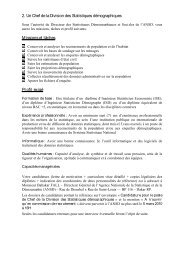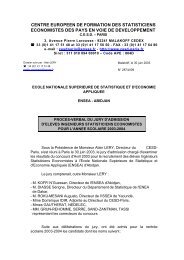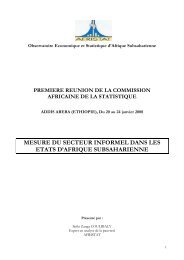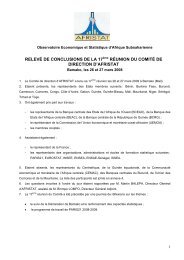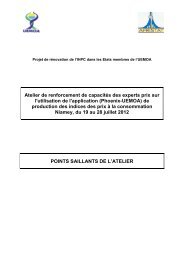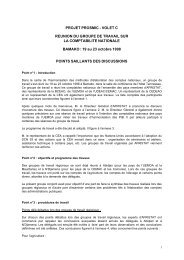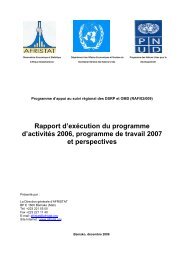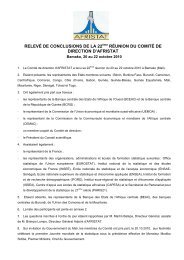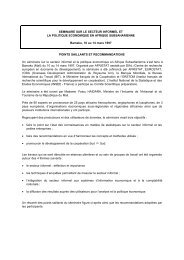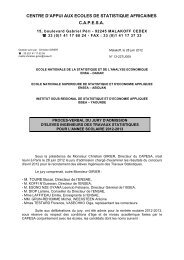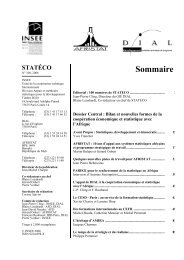Global Purchasing Power Parities and Real Expenditures - Afristat
Global Purchasing Power Parities and Real Expenditures - Afristat
Global Purchasing Power Parities and Real Expenditures - Afristat
You also want an ePaper? Increase the reach of your titles
YUMPU automatically turns print PDFs into web optimized ePapers that Google loves.
Appendix IICP SoftwareAn important innovation introduced in the 2005 ICP bythe World Bank is a suite of well-integrated <strong>and</strong> specializedsoftware tools to support the collection, storage, validation,<strong>and</strong> processing of price data to produce PPPs at variouslevels of aggregation. Underlying these tools is a databasein which individual <strong>and</strong> average prices of products can bestored in a secure manner. The database also stores theGDP expenditure weights (at the basic-heading level), spatialweights, exchange rates, <strong>and</strong> population data.This set of software tools is called the ICP “ToolPack,”which provides an end-to-end solution for the ICP process<strong>and</strong> introduces methodological rigor <strong>and</strong> best practices, aswell as transparency in the computations. The ToolPackcovers activities such as product list preparation for pricing,using structured product description; survey preparation;user <strong>and</strong> product outlet specification; price data collection<strong>and</strong> data entry; data validation at the country level; <strong>and</strong> dataprocessing <strong>and</strong> data exchange between the regional coordinators<strong>and</strong> national coordinators. At the regional level, theToolPack has a number of data validation tools for crosscountryanalysis across regions or subregions. Finally, theToolPack has several innovative features for reporting onthe price data aggregation to produce PPPs using a varietyof statistical methods.In the 2005 ICP round, several software componentswere developed. The following highlights some of the features<strong>and</strong> the ToolPack components that support them:m Product list preparation, using a structured productdescription (SPD) method. This component helpsin creating detailed product specifications for all categoriesof products used in the ICP. This supports adialogue between global, regional, <strong>and</strong> national ICPcoordinators <strong>and</strong> assists coordinators in comparingdifferent products.m Price survey <strong>and</strong> data collection for household consumptionitems. The price collection module (PCM)is designed for countries to collect price data on consumptionitems based on a product list <strong>and</strong> a surveyframework created using another module of theToolPack, the data processing module (DPM). ThePCM has basic data validation features to correctdata-entry errors <strong>and</strong> also has some data-auditingfunctions.m Data collection for government <strong>and</strong> gross fixedcapital formation items. Besides the household consumptionitem prices, which are collected using thePCM, the other major GDP categories of expenditure—construction,equipment, <strong>and</strong> compensation—197



